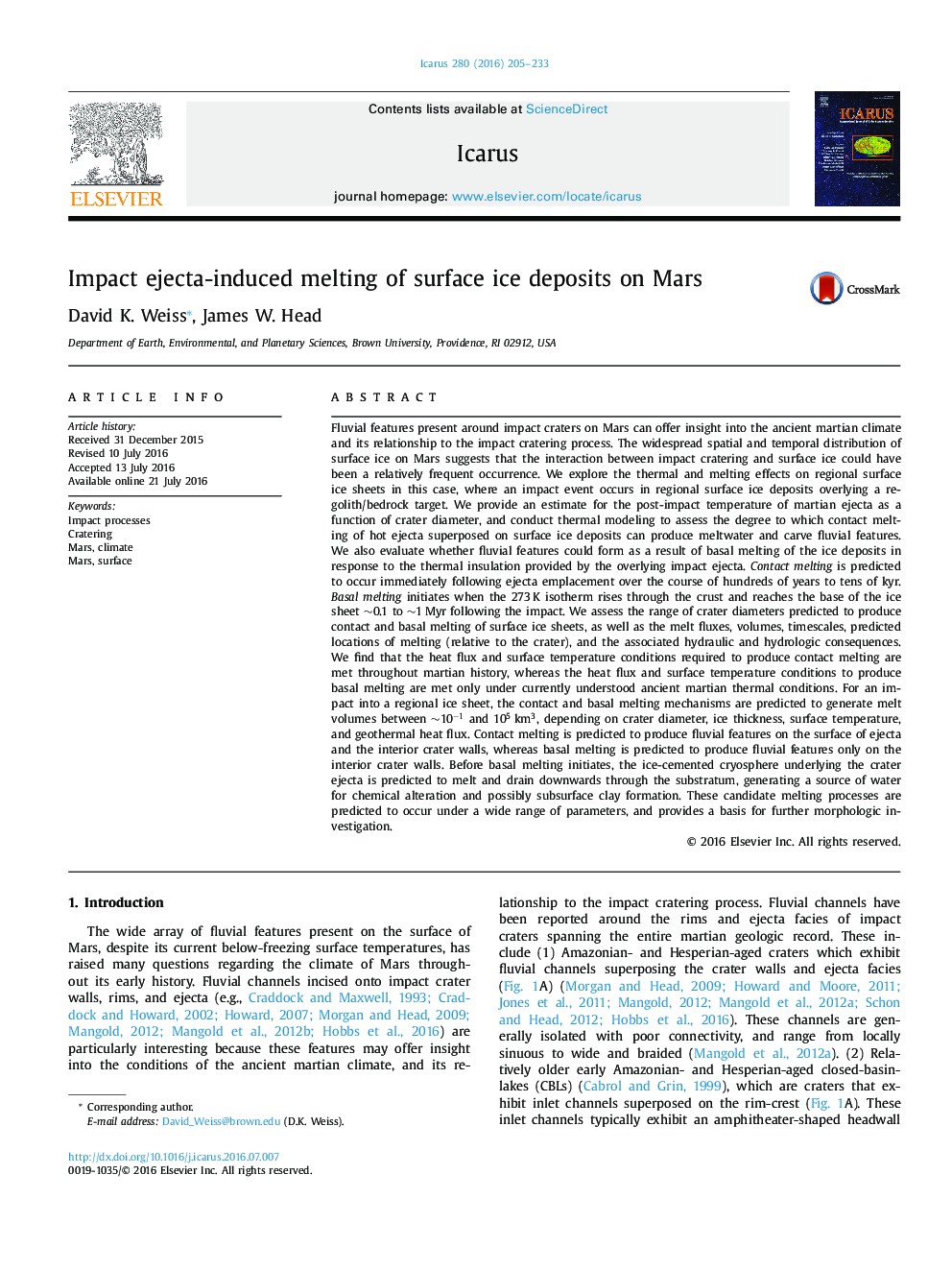| Article ID | Journal | Published Year | Pages | File Type |
|---|---|---|---|---|
| 8134731 | Icarus | 2016 | 29 Pages |
Abstract
Fluvial features present around impact craters on Mars can offer insight into the ancient martian climate and its relationship to the impact cratering process. The widespread spatial and temporal distribution of surface ice on Mars suggests that the interaction between impact cratering and surface ice could have been a relatively frequent occurrence. We explore the thermal and melting effects on regional surface ice sheets in this case, where an impact event occurs in regional surface ice deposits overlying a regolith/bedrock target. We provide an estimate for the post-impact temperature of martian ejecta as a function of crater diameter, and conduct thermal modeling to assess the degree to which contact melting of hot ejecta superposed on surface ice deposits can produce meltwater and carve fluvial features. We also evaluate whether fluvial features could form as a result of basal melting of the ice deposits in response to the thermal insulation provided by the overlying impact ejecta. Contact melting is predicted to occur immediately following ejecta emplacement over the course of hundreds of years to tens of kyr. Basal melting initiates when the 273Â K isotherm rises through the crust and reaches the base of the ice sheet â¼0.1 to â¼1Â Myr following the impact. We assess the range of crater diameters predicted to produce contact and basal melting of surface ice sheets, as well as the melt fluxes, volumes, timescales, predicted locations of melting (relative to the crater), and the associated hydraulic and hydrologic consequences. We find that the heat flux and surface temperature conditions required to produce contact melting are met throughout martian history, whereas the heat flux and surface temperature conditions to produce basal melting are met only under currently understood ancient martian thermal conditions. For an impact into a regional ice sheet, the contact and basal melting mechanisms are predicted to generate melt volumes between â¼10â1 and 105Â km3, depending on crater diameter, ice thickness, surface temperature, and geothermal heat flux. Contact melting is predicted to produce fluvial features on the surface of ejecta and the interior crater walls, whereas basal melting is predicted to produce fluvial features only on the interior crater walls. Before basal melting initiates, the ice-cemented cryosphere underlying the crater ejecta is predicted to melt and drain downwards through the substratum, generating a source of water for chemical alteration and possibly subsurface clay formation. These candidate melting processes are predicted to occur under a wide range of parameters, and provides a basis for further morphologic investigation.
Related Topics
Physical Sciences and Engineering
Earth and Planetary Sciences
Space and Planetary Science
Authors
David K. Weiss, James W. Head,
